 W
WMarella Agnelli was an Italian noblewoman, art collector, socialite, style icon and wife of Fiat chairman Gianni Agnelli. She often appeared in the fashion magazine Vogue. She was named to the International Best Dressed List Hall of Fame in 1963.
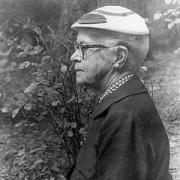 W
WNellie Beatrice Osborn Allen (1874–1961) was an American landscape architect. She is known for her knot gardens.
 W
WRobert Henry Allerton, born in Chicago, Illinois, United States, was the son and heir of First National Bank of Chicago co-founder Samuel Allerton. A philanthropist for most of his life, he left Allerton Garden, the Honolulu Academy of Art, the Art Institute of Chicago, and Robert Allerton Park as legacies for the public to enjoy.
 W
WCleo Baldon was an American architect, landscape architect, and furniture designer based in Los Angeles, where she contributed to many well-known structures, especially pools. She worked as the design director of Galper-Baldon Associates, headquartered in Venice, California. Baldon is credited with having a profound effect on the California furniture industry with her outdoor furniture designs.
 W
WNathan Franklin Barrett was an American landscape architect. He is best known for his designs for company town of Pullman, Illinois, the Hotel Ponce de Leon in Florida and Naumkeag in Stockbridge, Massachusetts. Barrett was a founding member and president of the American Society of Landscape Architects. He also maintained a long working relationship with many noted architects and firms of the time including those of McKim, Mead & White, Carrère and Hastings and Horace Trumbauer.
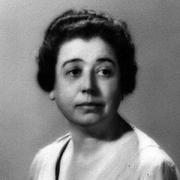 W
WKatherine Emilie Bashford (1885–1953) was an American landscape architect who designed residential gardens primarily in Pasadena and landscaping for several Southern California public housing projects.
 W
WThomas Dolliver Church, also known as Tommy, was a renowned and innovative 20th century landscape architect based in California. He is a nationally recognized as one of the pioneer landscape designers of Modernism in garden landscape design known as the 'California Style'. His design studio was in San Francisco from 1933 to 1977.
 W
WErnest Francis Coe, also "Tom Coe" was an American landscape designer who envisioned a national park dedicated to the preservation of the Everglades, culminating in the establishment of Everglades National Park. Coe was born and spent most of his life in Connecticut as a professional gardener, moving to Miami at age 60. He was enormously impressed with the Everglades and became one of several South Florida-based naturalists who grew concerned for the wanton destruction of plants, animals, and natural water flow in the name of progress and prosperity. Coe worked for more than 20 years to get Everglades National Park established, but he viewed the effort as mostly a failure. However, Oscar L. Chapman, former Secretary of the Interior, stated "Ernest Coe's many years of effective and unselfish efforts to save the Everglades earned him a place among the immortals of the National Park movement."
 W
WMarian Cruger Coffin was an American landscape architect who became famous for designing numerous gardens for members of the East Coast elite. As a child, she received almost no formal education but was home-tutored while living with her maternal relatives in upstate New York. Coffin was determined to embark on a career despite the social problems that it would cause for a woman of her class and enrolled at the Massachusetts Institute of Technology, where she studied between 1901–4 as one of only four women in architecture and landscape design.
 W
WRoy Diblik is an American perennial garden designer, plant nurseryman, and author of The Know Maintenance Perennial Garden (2014). He co-owns the Northwind Perennial Farm in Burlington, Wisconsin.
 W
WAndrew Jackson Downing was an American landscape designer, horticulturist, and writer, a prominent advocate of the Gothic Revival in the United States, and editor of The Horticulturist magazine (1846–52). Downing is considered to be a founder of American landscape architecture.
 W
WAnthony Duquette was an American artist who specialized in designs for stage and film.
 W
WCharles Frederick Eaton (1842–1930) was a California Arts and Crafts artist and landscape architect who helped introduce new plant species to the state.
 W
WGarrett Eckbo was an American landscape architect notable for his seminal 1950 book Landscape for Living.
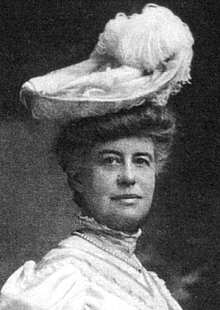 W
WHelena Rutherfurd Ely was an American author, amateur gardener and founding member of the Garden Club of America whose three books influenced American and British gardeners to avoid Victorian formal gardens in favor of plantings that embodied an "informal and sensual style." She focused on planning her gardens around planting "hardy perennial plants found in the agricultural landscape."
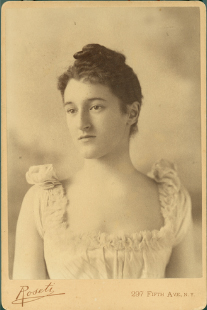 W
WBeatrix Cadwalader Farrand was an American landscape gardener and landscape architect. Her career included commissions to design about 110 gardens for private residences, estates and country homes, public parks, botanic gardens, college campuses, and the White House. Only a few of her major works survive: Dumbarton Oaks in Washington, D.C., the Abby Aldrich Rockefeller Garden on Mount Desert, Maine, the restored Farm House Garden in Bar Harbor, the Peggy Rockefeller Rose Garden at the New York Botanical Garden, and elements of the campuses of Princeton, Yale, and Occidental.
 W
WRenée Gunter is an American landscape designer based in Los Angeles, California. She is notable for drought-tolerant gardens.
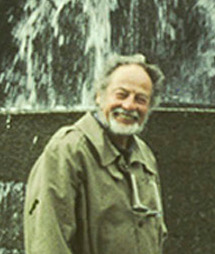 W
WLawrence Halprin was an American landscape architect, designer and teacher.
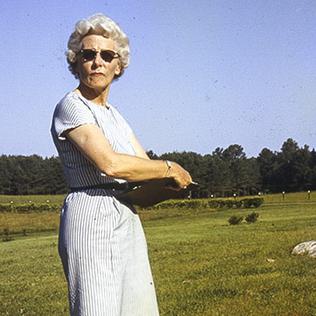 W
WEdith Harrison Henderson (1911–2005) was an American landscape architect who practiced largely in the American South. She wrote a column for the Atlanta Journal Constitution and was the first woman to be elected an officer of the American Society of Landscape Architects.
 W
WAlice Recknagel Ireys was an American landscape architect whose notable clients included the Brooklyn Botanic Garden, the New York Botanical Garden, the Clark Botanic Garden, the Abigail Adams Smith Museum, and the Brooklyn Museum.
 W
WRobert W. Irwin is an American installation artist who has explored perception and the conditional in art, often through site-specific, architectural interventions that alter the physical, sensory and temporal experience of space.
 W
WAdrian Janes was the owner of a significant American iron foundry in the Bronx, New York.
 W
WCharles Alexander Jencks was an American cultural theorist, landscape designer, architectural historian, and co-founder of the Maggie’s Cancer Care Centres. He published over thirty books and became famous in the 1980s as theorist of Postmodernism. Jencks devoted time to landform architecture, especially in Scotland. These landscapes include the Garden of Cosmic Speculation and earthworks at Jupiter Artland outside Edinburgh. His continuing project Crawick Multiverse, commissioned by the Duke of Buccleuch, opened in 2015 near Sanquhar.
 W
WJens Jensen was a Danish-American landscape architect.
 W
WDaniel Urban Kiley was an American landscape architect, who worked in the style of modern architecture. Kiley designed over one-thousand landscape projects including Gateway Arch National Park in St. Louis.
 W
WMaya Ying Lin is an American designer and sculptor. In 1981, while an undergraduate at Yale University, she achieved national recognition when she won a national design competition for the planned Vietnam Veterans Memorial in Washington, D.C.
 W
WElizabeth Sherman Lindsay was an American landscape gardener, American Red Cross executive during the First World War and wife of British diplomat Sir Ronald Charles Lindsay.
 W
WWarren Henry Manning was an American landscape designer and promoter of the informal and naturalistic "wild garden" approach to garden design. In his designs, Manning emphasized pre-existing flora through a process of selective pruning to create a “spatial structure and character.” An advocate for the conservation of the American landscape, Manning was a key figure in the formation of the American Society of Landscape Architects and a proponent of the National Park System.
 W
WLynden B. Miller is a public garden designer, parks advocate and author best known for her restoration of Central Park's Conservatory Garden in 1982–1983.
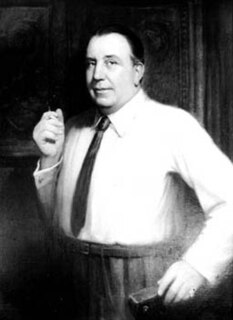 W
WAddison Cairns Mizner was an American architect whose Mediterranean Revival and Spanish Colonial Revival style interpretations left an indelible stamp on South Florida, where it continues to inspire architects and land developers. In the 1920s Mizner was the best-known and most-discussed living American architect. Palm Beach, Florida, which he "transformed", was his home, and most of his houses are there. He believed that architecture should also include interior and garden design, and set up Mizner Industries to have a reliable source of components. He was "an architect with a philosophy and a dream." Boca Raton, Florida, a farming town that was established in 1896 became the focus Mizner's most famous development project.
 W
WKelly Lynne Moran is an American actress, artist, author and builder. The Washington Times newspaper wrote "she is also one heck of a designer." She has a degree in Fine Arts from Frostburg State University, graduating in 1982 and continually trains at the Schuler School of Fine Arts in Baltimore, Maryland, painting in the 16th Century Dutch Old Masters' style. She continued her education at the George Washington University in 1995 studying Landscape Design and the USDA Graduate School studying Botany, and Horticulture. Working as a landscape designer in the Washington D.C. metro area landed Moran on Fox 5 News in 2002, at 5:00 doing gardening segments.
 W
WIsamu Noguchi was a Japanese-American artist and landscape architect whose artistic career spanned six decades, from the 1920s onward. Known for his sculpture and public artworks, Noguchi also designed stage sets for various Martha Graham productions, and several mass-produced lamps and furniture pieces, some of which are still manufactured and sold.
 W
WLaurie Olin is an American landscape architect. He has worked on landscape design projects at diverse scales, from private residential gardens to public parks and corporate/museum campus plans.
 W
WFrederick Law Olmsted was an American landscape architect, journalist, social critic, and public administrator. He was the father of American landscape architecture. Olmsted was famous for co-designing many well-known urban parks with his partner Calvert Vaux. Olmsted and Vaux's first project was Central Park, which resulted in many other urban park designs, including Prospect Park in New York City and Cadwalader Park in Trenton. He headed the pre-eminent landscape architecture and planning consultancy of late nineteenth-century America, which was carried on and expanded by his sons, Frederick Jr and John C, under the name Olmsted Brothers.
 W
WCary Millholland Parker (1902–2001) was an American landscape architect based in Washington, D.C.
 W
WSamuel Bowne Parsons, Jr., was an American landscape architect. He is remembered as being a founder of the American Society of Landscape Architects, helping to establish the profession.
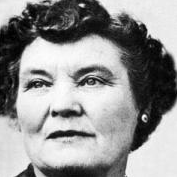 W
WElizabeth Greenleaf Pattee (1893–1991) was an American architect, landscape architect, and architecture professor in the Northeast whose career spanned a half century.
 W
WTheodore Payne, was an English horticulturist, gardener, landscape designer, and botanist. His best known work was done over his adult life in Southern California.
 W
WCarl Francis Pilat (1876–1933), the nephew of Ignatz Anton Pilát, was an organizing member of the firm of Hinchman & Pilat, then landscape architect for the city parks 1913–1918. While with the city, Carl Pilat designed Astoria Park, the Telewan project in Queens, both around 1913, and redesigns of Union Square and Isham, Gaynor memorial and Silver Lake parks. Pilat drew landscape designs for estates of C. H. Dodge, Spencer Trask, E. M. Shepard, E. K. Cone and the Baroness von Zimmerman, some of the gardens at what later became the Reeves-Reed Arboretum in Summit, New Jersey, and the Theodore Vail memorial in Parsippany, New Jersey.
 W
WBruce Porter was an American painter, sculptor, stained-glass designer, writer, muralist, landscape designer, and art critic.
 W
WElsa Rehmann was an American landscape architect best known for her pioneering ecological approach to garden design. She and Edith A. Roberts promoted seeking inspiration in plant communities, which Rehmann considered to be the basis for design criteria and translated them into artistic composition.
 W
WWilliam Saunders was a botanist, nurseryman, landscape gardener, landscape designer, and horticulturist. As the chief experimental horticulturalist in the US, he was responsible for the introduction of many fruits and vegetables to American agriculture; with seven others he founded the National Grange of the Order of Patrons of Husbandry, a fraternal organization in the United States.
 W
WKatherine Olivia "Kate" Sessions was an American botanist, horticulturalist, and landscape architect closely associated with San Diego, California, and known as the "Mother of Balboa Park."
 W
WEllen Biddle Shipman was an American landscape architect known for her formal gardens and lush planting style. Along with Beatrix Farrand and Marian Cruger Coffin, she dictated the style of the time and strongly influenced landscape design as a member of the first generation to break into the largely male occupation.
 W
WFletcher Steele was an American landscape architect credited with designing and creating over 700 gardens from 1915 to the time of his death.
 W
WPeter Van de Wetering was a Dutch-born American horticulturist and nurseryman. Van de Wetering won the commission to plant 10,000 daffodils at United Nations Plaza in New York City beginning in 1958. He and his nursery, Van de Wetering Greenhouses, were also responsible to landscape and plant thousands of tulips, begonias, and other plants along Manhattan's Park Avenue since 1959.
 W
WCalvert Vaux was an English-American architect and landscape designer, best known as the co-designer, along with his protégé and junior partner Frederick Law Olmsted, of what would become New York City's Central Park.
 W
WPeter Walker is an American landscape architect and the founder of PWP Landscape Architecture.
 W
WGanna Walska was a Polish opera singer and garden enthusiast who created the Lotusland botanical gardens at her mansion in Montecito, California. She was married six times, four times to wealthy husbands. The lavish promotion of her lackluster opera career by her fourth husband, Harold Fowler McCormick, inspired aspects of the screenplay for Citizen Kane.
 W
WEdith Wharton was an American novelist, short story writer, and designer. Wharton drew upon her insider's knowledge of the upper class New York "aristocracy" to realistically portray the lives and morals of the Gilded Age. In 1921, she became the first woman to win the Pulitzer Prize in Literature, for her novel The Age of Innocence. She was inducted into the National Women's Hall of Fame in 1996. Among her other well known works are The House of Mirth and the novella Ethan Frome.
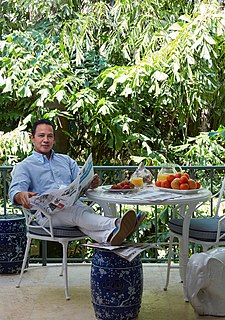 W
WFernando Wong is a Panamanian landscape designer born in Panama City. He moved to the United States in 2001 and established his landscape architecture firm, Fernando Wong Outdoor Living Design, Inc. in Miami Beach, Florida in 2005. Since then he has opened additional offices in Palm Beach, Florida and Southampton, New York. Wong designs large private gardens, public parks, museums and hotels, and has won several design awards. His television show Clipped with Martha Stewart debuted on the Discovery+ and HGTV channels on March 12, 2021. Wong has been called "one of the most important landscape designers in America" by Architectural Digest.
 W
WFrank Lloyd Wright Jr., commonly known as Lloyd Wright, was an American architect, active primarily in Los Angeles and Southern California. He was a landscape architect for various Los Angeles projects (1922–24), provided the shells for the Hollywood Bowl (1926–28), and produced the Swedenborg Memorial Chapel at Rancho Palos Verdes, California (1946–71). His name is frequently confused with that of his more famous father, Frank Lloyd Wright.